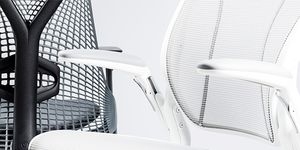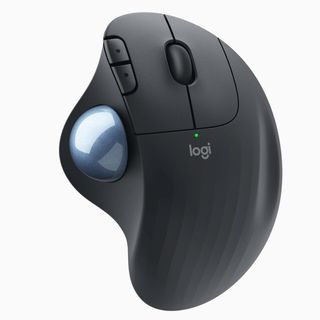For decades, the standard set of tools for computing has been more or less set in stone. When you sit at a desk, you use a keyboard for typing in words and you use a mouse to point and click things. But that's not your only option! And, in fact, there are a number of terrific reasons to be using a trackball instead.
The mouse isn't all bad
While the mouse hardly needs a vigorous defense since it's such a comfortable default, it's worth briefly touching on its key advantages. Mice are plentiful and cheap, and odds are that you happen to just have one lying around. Though they aren't necessarily more accurate than other devices, you'll probably have a much easier time executing demanding tasks (like gaming), due to familiarity. Alternative pointing devices take work to get used to! Lefties will also appreciate that although many mice are molded for righties, the popular Apple Magic Mouse is ambidextrous in design.
All that said, let me be clear: I'm 1000% team trackball. Let me make the case.
Trackball vs mouse
For all their popularity, there are a ton of reasons not to use a traditional mouse. Do you ever get pain in your wrist after a long stint at the computer? I know I used to. It might feel like you are in a resting state, but various parts of your hand and arm are actually tense. If you hold your mouse with a so-called “claw” grip, muscles on the back of your hand are too. Worse yet, standard mouse posture, with your palm parallel to the desk, keeps your forearm in a perpetually twisted state. Twisting your wrist to the left or right as you point and click can cause further stress. Also, you may not have it (yet), but “mouse elbow” is real.
Trackball vs vertical mouse
One solution to this problem is a vertical mouse which holds your wrist in a better position like the Logitech MX Vertical. But, like a regular mouse, a vertical mouse requires precious acreage on your desk. Unless your sensitivity is through the roof, you’ll always need a decent amount of room to slide the dang thing around, lift it up, set it down and then slide it around again. And if a glass of water or can of soda encroaches on that space, you’re asking for trouble.
Completely stationary, a trackball lets you dial in a comfortable, relaxed hand position and keep it all day every day while simultaneously freeing up your desk for mugs, post-its, chargers — whatever you want.
Trackball vs trackpad
Standalone trackpads also have a stationary footprint, and are an improvement over a mouse in that regard. They can also offer some fun gesture controls depending on your computer’s operating system. But they come with their own downsides. All that swiping and tapping can still tweak your wrist and, worst of all, clicking and dragging becomes a true nightmare. A good trackball, by contrast, enforces a set wrist position. What you lose in unique gestures, you're all but guaranteed to make up in extra buttons, which can typically be programmed to accomplish the same (or different) actions.
The best trackball mouse to try
There are a wide variety of vastly-different trackballs, so you have creative license to figure out which model works best for you.
The first trackball that I bought was the Kensington Expert Wireless. I’m righthanded, but its symmetrical design makes it a rare option that also works for lefties. And while folks swear by trackball models that put a smaller, marble-sized ball under your thumb, but I instantly fell in love with the cue-ball design that lets me pilot my pointer with my more dexterous index and middle fingers. Switching overtook a little bit of getting used to, a few weeks of minor fumbling with the cursor, but the improvement in comfort was immediate and extreme. It was love.
Then I discovered the Elecom Huge, a common sight on Reddit’s haven for trackball nerds. With its mitten-shaped design, it’s almost obscenely comfortable to use, and the thumb-mounted left-click button and traditional scroll wheel mean that I never have to move my wrist at all — a small improvement that feels almost magical in practice. Your mileage may vary when it comes to style, but for my money, it’s a sharp, neo-Thinkpad antidote to the theoretically-all-white-but-eventually-dingy aesthetic of Apple’s hegemonic peripheral mice and keyboard.
Recently, I've been toying around with Logitech's Ergo M575. Its thumb-ball design took me, trackball nerd, a little getting used to but has been well worth the effort. I don't think I've ever used a pointing device that has taken up less space on my already cramped desk, or required less potentially painful wrist movement in the process. It's a god-send for small desks.
The right keyboard, the right trackball, can give you a sense of ownership and agency that adds a spark of joy to your day when you sit down to get to work. You’re not just using any computer, you’re using your computer, tricked out just how you like. Yes, it’s a nerdy endeavor, but you’re sitting there all day either way. Might as well be comfortable, and maybe even have a little fun.
















